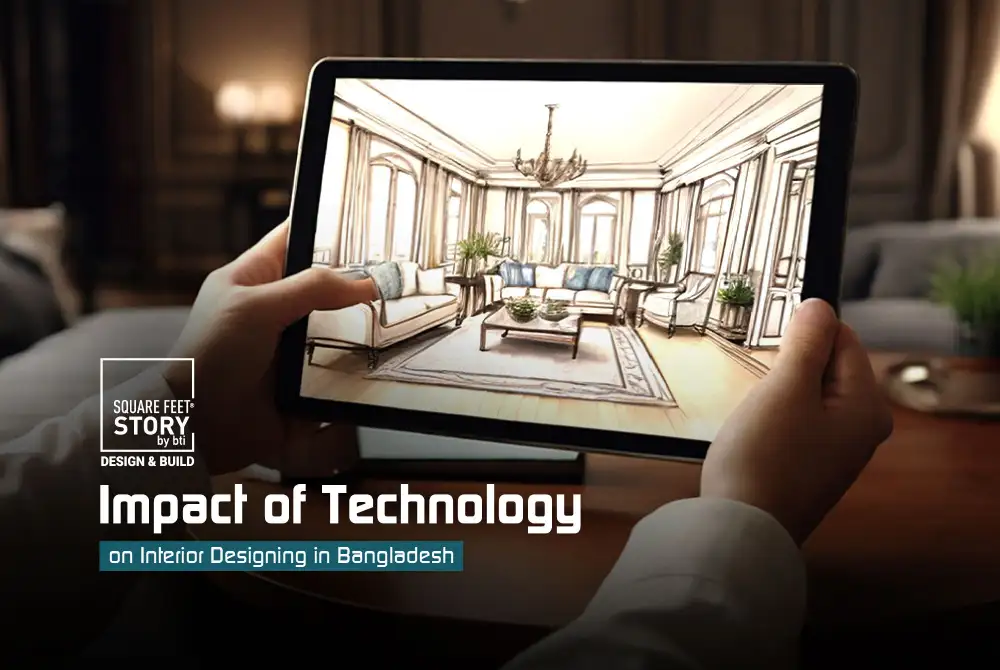
Technology’s Impact on Interior Designing in Bangladesh
Bangladesh has always been a country known for its rich cultural heritage and rapid urban development. It is currently experiencing a transformative shift due to advancements in technology. This digital revolution is influencing every facet of interior design, from conceptualization to execution, and is reshaping how designers approach their projects. Here’s a closer look at how technology is making waves in the interior design landscape of Bangladesh.
1. Enhanced 3D Visualization with Rendering
One of the most significant impacts of technology on interior design is the use of 3D rendering and visualization tools. Traditionally, interior designers used to rely on sketches and physical samples to convey their ideas. Today, software like SketchUp, 3ds Max, and Revit allows designers to create highly detailed and realistic 3D models of their projects. In Bangladesh, where visualizing a space can be challenging due to the traditional approach to design, these tools have revolutionized client presentations. Clients can now see a virtual representation of their space before any work begins, making it easier to make informed decisions and reduce the risk of costly revisions.
2. Virtual Reality (VR) and Augmented Reality (AR)
Virtual Reality (VR) and Augmented Reality (AR) technologies are taking interior design to the next level by offering immersive experiences. VR allows clients to ‘walk through’ their future spaces in a fully immersive environment, providing a clear sense of scale, texture, and ambiance. AR, on the other hand, enables clients to overlay digital elements onto their existing spaces using smartphones or tablets. In Bangladesh, where traditional design practices are prevalent, these technologies are helping designers and clients bridge the gap between imagination and reality, enhancing the decision-making process.
3. Smart Home Integration
The rise of smart home technology is another major trend influencing interior design in Bangladesh. With the advent of Internet of Things (IoT) devices, designers are increasingly incorporating smart technology into their projects. From smart lighting and climate control to advanced security systems, these technological advances are enhancing comfort and convenience. As urban areas in Bangladesh expand and modernize, integrating smart home features is becoming a standard expectation, pushing interior designers to stay updated with the latest advancements.
4. Sustainable and Efficient Design
Technology is also playing a crucial role in promoting sustainability in interior design. Advanced software tools help designers optimize energy usage, select eco-friendly materials, and implement efficient lighting solutions. In a country like Bangladesh, where environmental concerns are becoming more pressing, these tools are helping designers create spaces that are not only aesthetically pleasing, but also environmentally responsible. Energy-efficient appliances, sustainable materials, and innovative design solutions are becoming integral parts of modern interior design practices.
5. E-Commerce and Online Resources
The growth of e-commerce and online resources has made it easier for interior designers in Bangladesh to access a wide range of materials, furniture, and decor items. Online platforms provide a plethora of options, often with detailed descriptions and reviews, allowing designers to source products more efficiently. Additionally, online design resources, including tutorials, forums, and virtual showrooms, offer valuable insights and inspiration. This accessibility helps designers stay up-to-date with global trends and find unique solutions that suit their clients’ needs.
6. Project Management Tools
Technology has also streamlined project management in interior design. Tools such as Trello, Asana, and Microsoft Teams facilitate better communication, scheduling, and tracking of project progress. These tools are essential for managing multiple projects, coordinating with clients and vendors, and ensuring timely delivery. In the fast-paced urban environments of Bangladesh, efficient project management is crucial for meeting deadlines and maintaining client satisfaction.
The impact of technology on interior design in Bangladesh is profound and multifaceted. From enhanced visualization and immersive experiences to smart home integration and sustainable practices, technology is driving innovation and improving the quality of design solutions. As the country continues to urbanize and modernize, embracing these technological advancements will be key to staying competitive and meeting the evolving needs of clients. For interior designing firms in Bangladesh, leveraging technology is not just an option, but rather a necessity to create functional, beautiful, and future-ready spaces.


